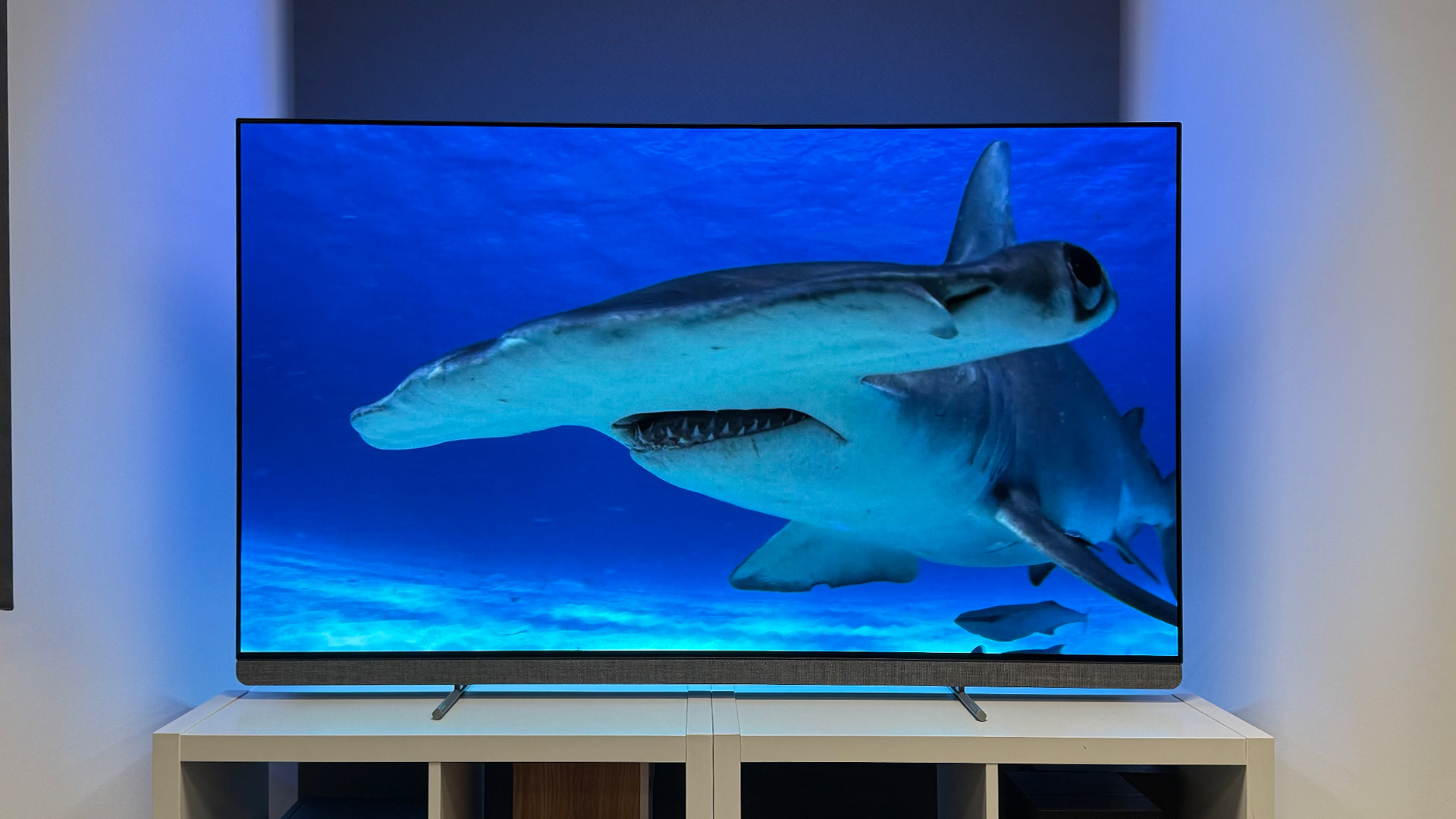One-star review shockers, failing formats and a ten-way amplifier test – What Hi-Fi? saw it all in June 1995
Thirty years ago, a 10-way group test was the norm; one-star reviews and surround sound? Not so much

This month’s visit to What Hi-Fi? archive saw me, as usual, pick up an issue – if not quite at random, certainly with little pre-planning – and finding plenty of content to raise an eyebrow. Similarities, contrasts, the familiar and the strange; there’s always something of note to highlight, whichever issue I stumble upon.
The June 1995 issue it is, then. Thirty years ago, What Hi-Fi? was able to undertake a ten-way Supertest of two-channel stereo amplifiers with laser-like focus on a tiny price-break. The team was also investigating the burgeoning world of multi-channel home cinema sound, looking at AV amplifiers and speakers specifically designed for surround-sound duties.
It’s an interesting comparison with the June 2025 issue of the magazine – out now and available in all good newsagents! – which also concerns itself with improving your TV’s sound, and also recommends some stereo amplifiers. (Those amps, mind you, are at a considerably more lofty price-point than we were investigating 30 years ago.)
So much power…
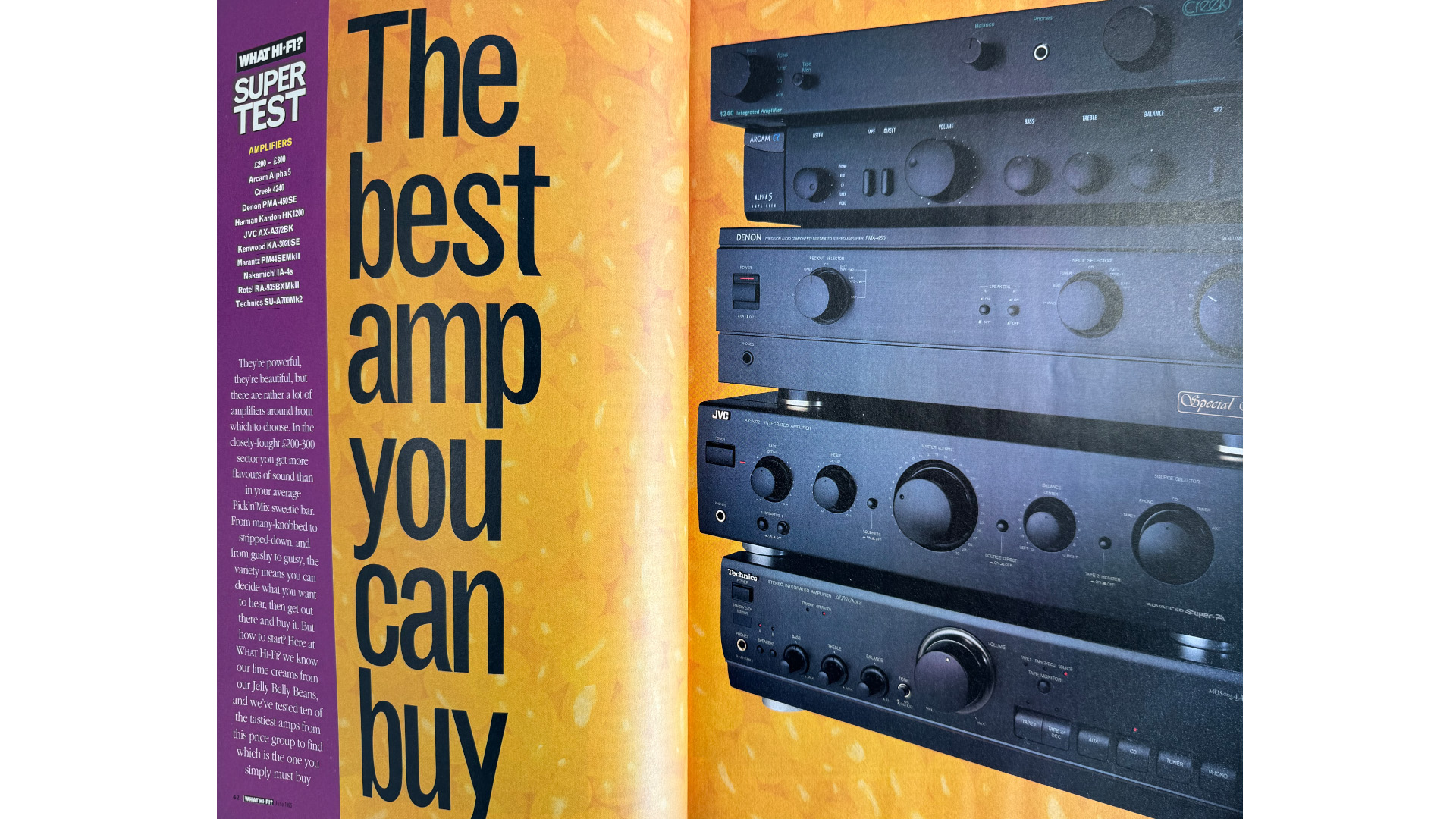
The amplifiers we are highlighting in the latest issue of What Hi-Fi? are serious hi-fi – high-ticket items that we love across a broad band of pricing (from £1000-£5000). Back in ’95, though, it was possible to put as many as 10 amplifiers in direct comparison with one another – and each of them costing between £200 and £300.
From Arcam to Technics, via the likes of Creek, JVC, Kenwood and Nakamichi, we put the two handfuls of power providers through their paces. And it was the Kenwood KA-3020SE, a What Hi-Fi? Award winner for a reason, that shone the brightest. And it came in at just £200, so there was some serious value there.
One that got away
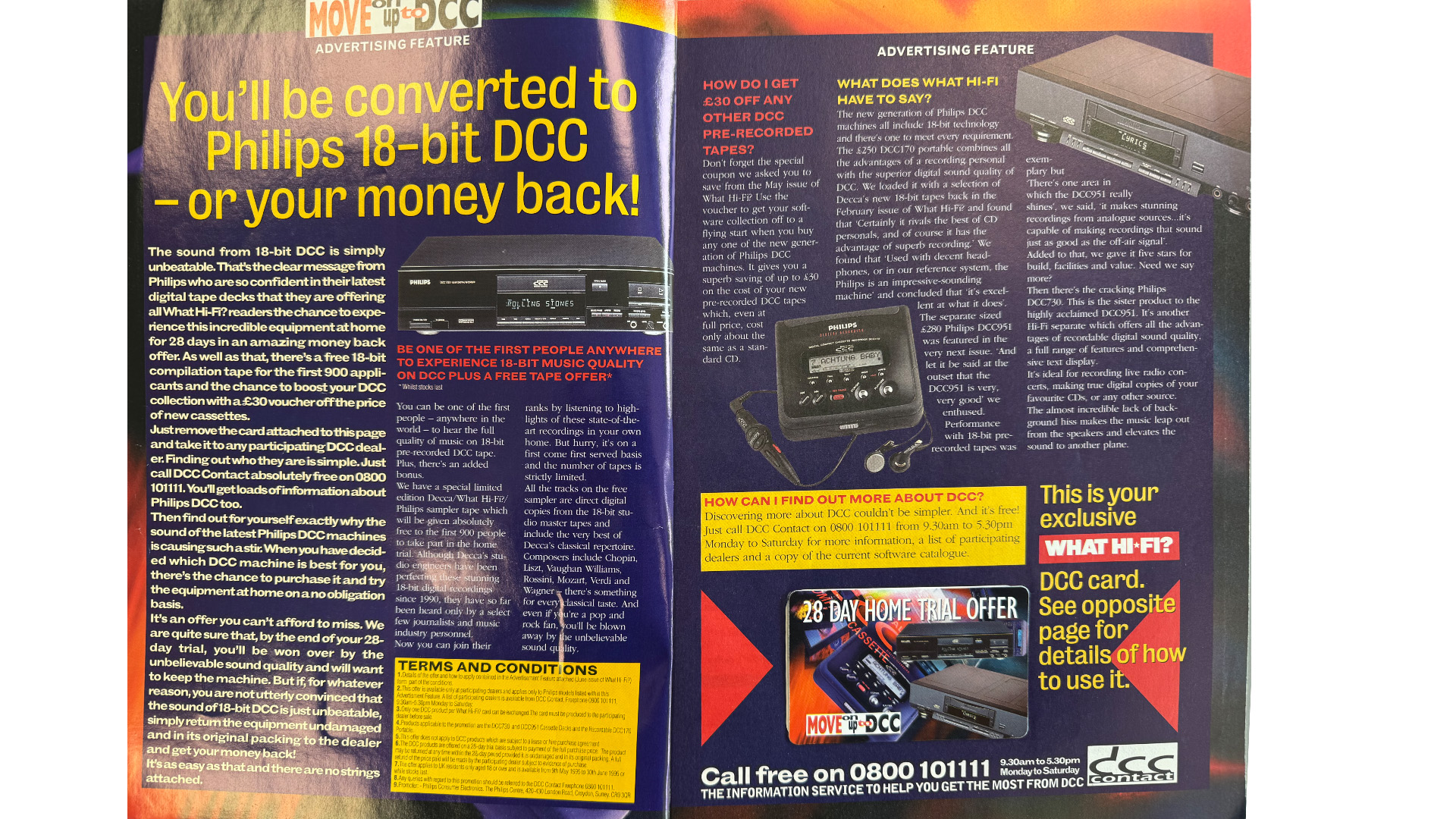
The amplifier, of course, has been the heart of the hi-fi system since the beginning of recorded music reproduction. There was evidence in the June 1995 issue, though, of a hi-fi format that flew, perhaps, a little close to the sun, only to crash and burn.
Inside the front cover of the magazine is an offer from arch-innovator Philips for readers to try one of its new (and well-reviewed) Digital Compact Cassette machines in a 28-day money-back offer. It is a rather sobering reminder that brilliance in a product is not necessarily enough to make it a success.
The latest hi-fi, home cinema and tech news, reviews, buying advice and deals, direct to your inbox.
Format wars have been a recurring theme in the world of home entertainment, and this format was to fall by the wayside rather quickly: Philips discontinued the sale of its DCC technology just a year or so later after the public failed to take it to its heart (even after this generous offer to our loyal readers…)
When CD was king
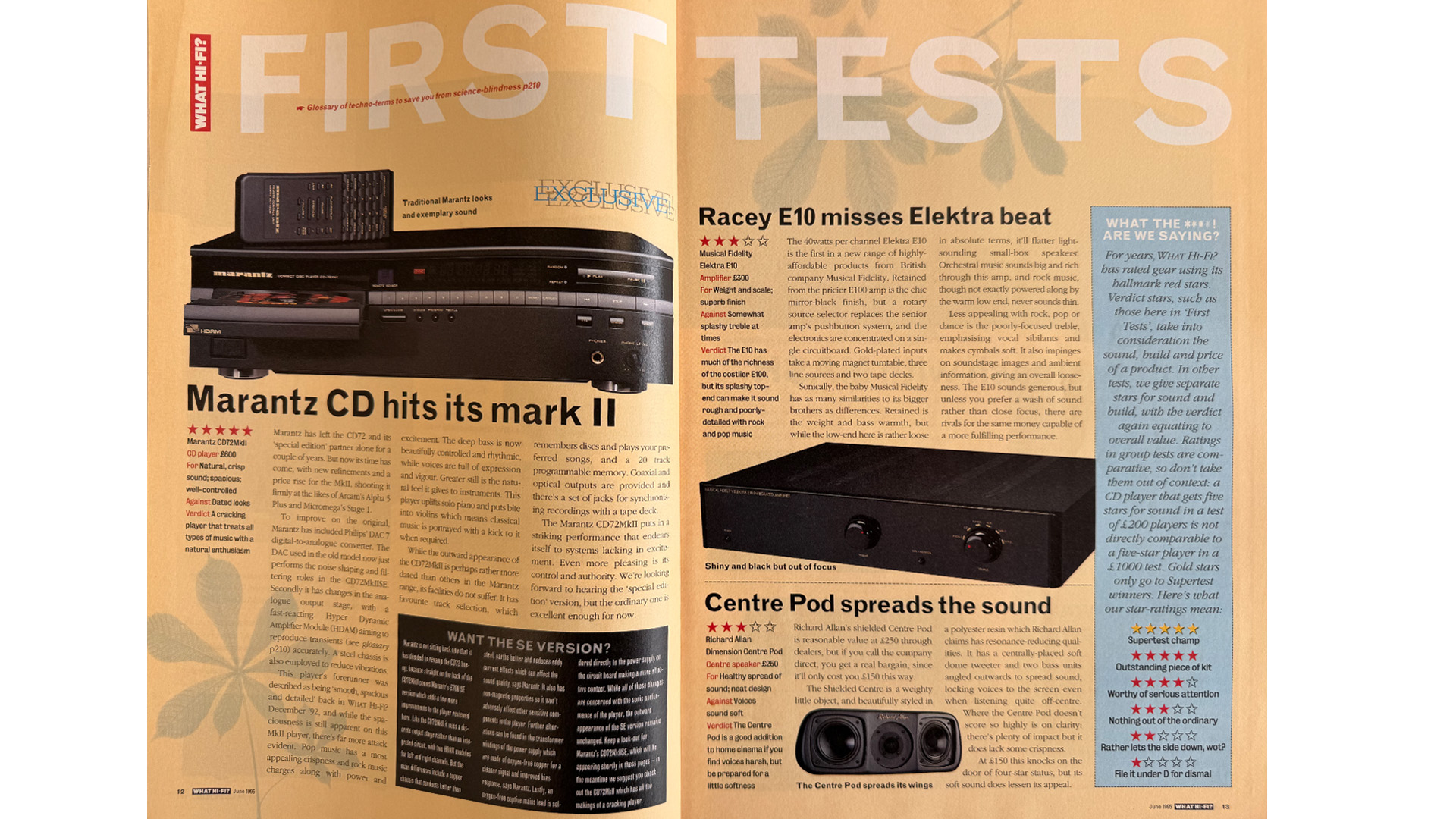
The lead First Test back in June 1995 was the Marantz CD72MkII, a five-star £600 CD player that put in a striking performance for our review team.
The mid-90s was, of course, the very height of CD’s power in the world of music reproduction, and the Marantz was just one of a number of supremely talented performers at the time; it had to contend with excellent rivals from the likes of Arcam and Micromega, among others.
And the format, while it has waned considerably over the intervening three decades, still endures with some strength – as the launch of a brand new Cyrus 40 CD shows only too clearly.
One-star rarity
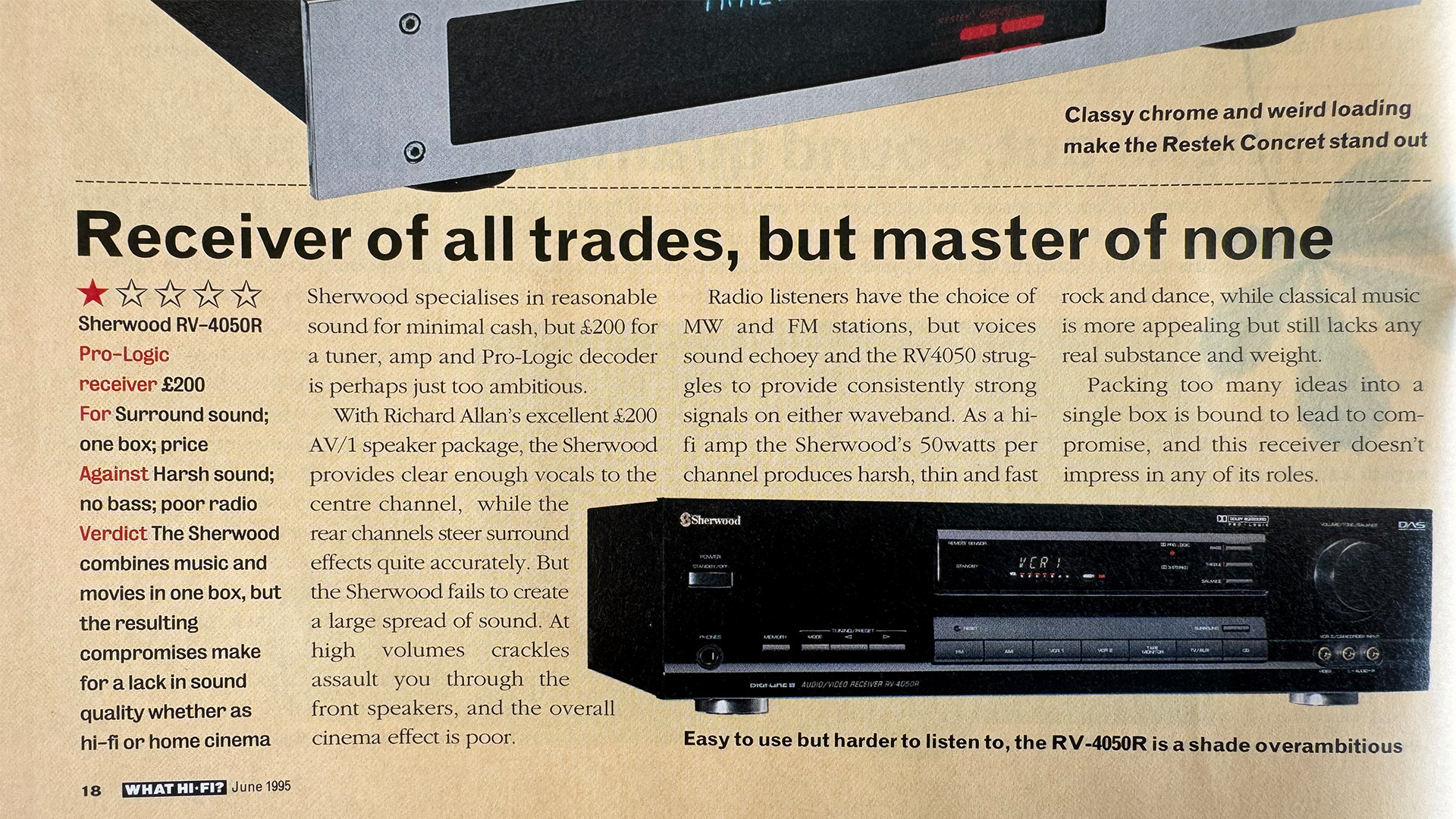
Another test to leap off the pages of the June 1995 issue of the magazine at me did so for very different reasons. What Hi-Fi? star ratings have been with us for most of the brand’s history and it is fair to say that the vast majority of products we test are at the very least competent.
Solid three and four-star reviews abound – and we should all be happy to see that there are plenty of excellent five-star performers out there to buy as well. Two and even, heaven forbid, one-star products are far, far more unusual (although certainly not unheard of – cough Amazon, cough).
I present, then, to you, dear reader, a one-star pro-logic home cinema receiver from Sherwood. The final paragraph sums things up, really: “Packing too many ideas into a single box is bound to lead to compromise, and this receiver doesn’t impress in any of its roles.”
Bringing up the rear
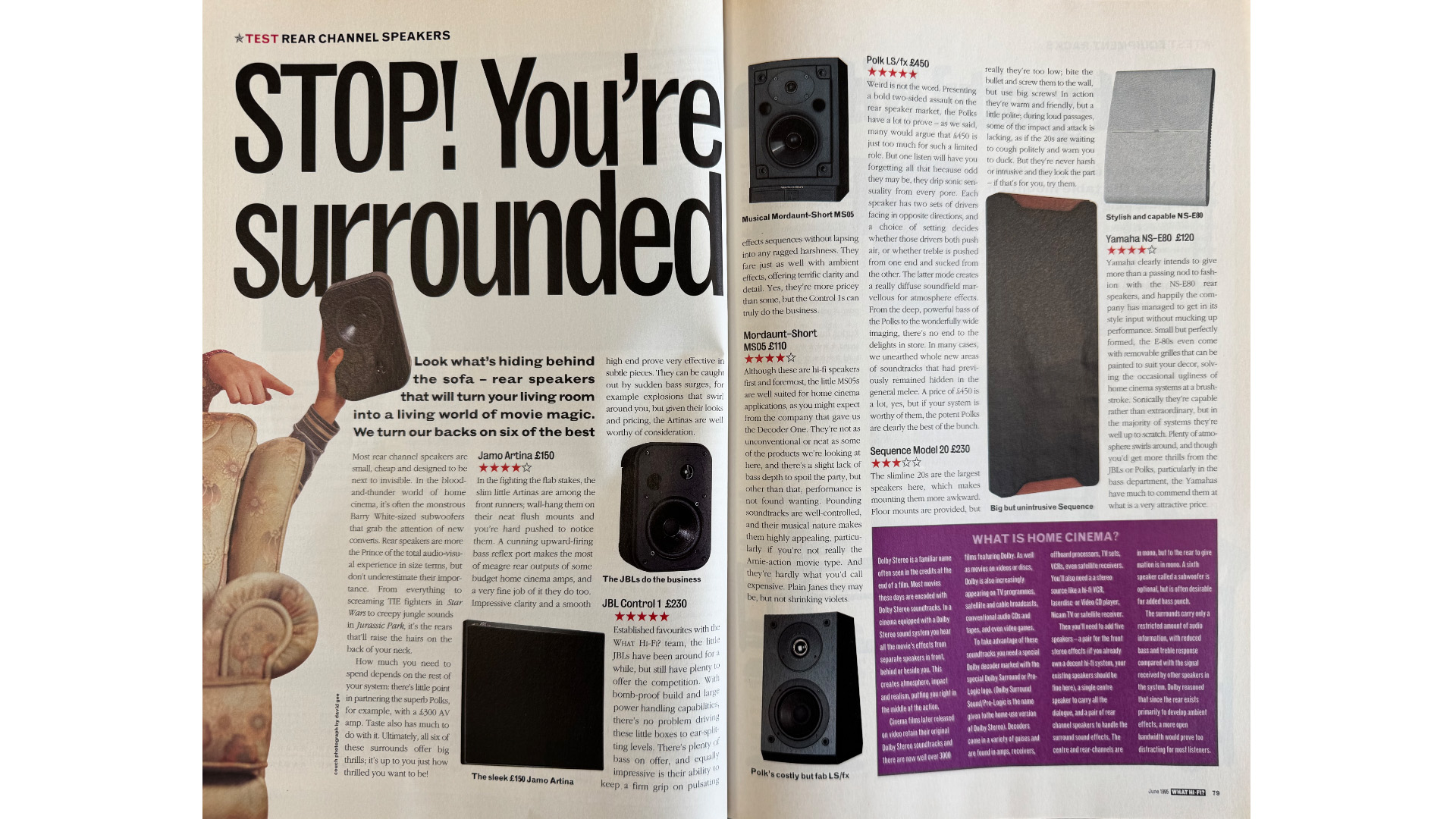
To bring things back to the start of this column, the little test of rear channel speakers from 30 years ago was interesting. The concept of home cinema was clearly relatively new – other than incredibly expensive custom installs, it hadn’t been something most people could have reasonably considered.
Interesting, then, to see a panel explaining just what we meant by “home cinema” and going into a bit of detail about just what these small surround speakers were for and how they differed from the main speakers in a system. The panel also goes into the different forms of Dolby sound and explains how to get the most out of your system.
All very different from today, of course, when it is perfectly possible to get a form of surround sound (in Dolby Atmos, for example) that was beyond even cinema complexes 30 years ago – and that from a relatively small bar sitting in front of your TV.
And, in the case of some of the soundbars gracing the front cover of the June 2025 edition of What Hi-Fi?, for not any more money than you would have had to shell out for some of those surrounds of 1995.
MORE:
Harman is buying Bowers & Wilkins, Marantz and Denon as Masimo sells its consumer audio business
What to expect from the Munich High-End Show
Our pick of the best stereo amplifiers
Read our full Cyrus CD 40 review

Jonathan Evans is the editor of What Hi-Fi? magazine, and has been with the title for 18 years or so. He has been a journalist for more than three decades now, working on a variety of technology and motoring titles, including Stuff, Autocar and Jaguar. With his background in sub-editing and magazine production, he likes nothing more than a discussion on the finer points of grammar. And golf.
You must confirm your public display name before commenting
Please logout and then login again, you will then be prompted to enter your display name.
